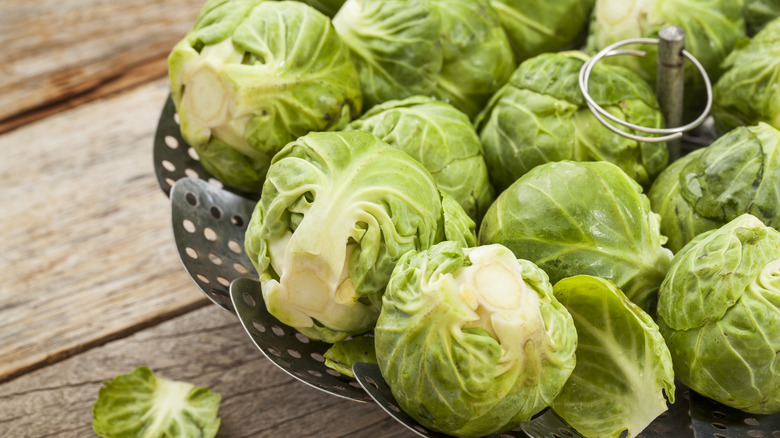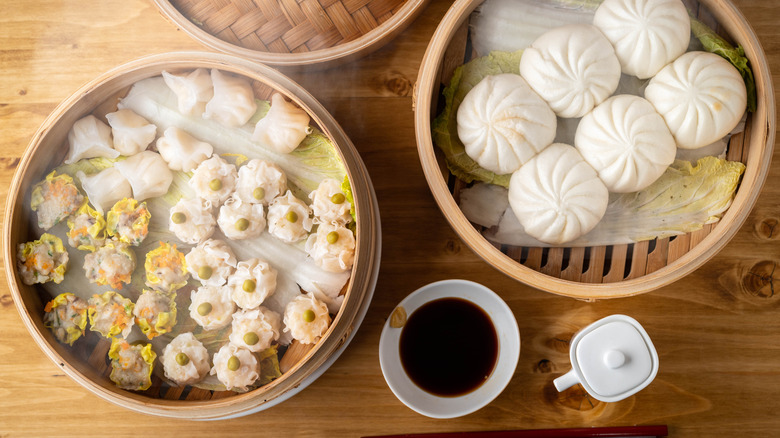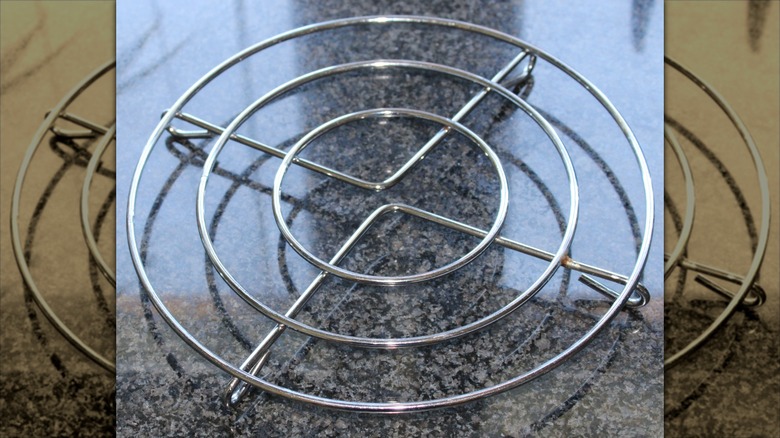You Don't Need A Dedicated Steamer Pot. Here's What To Use Instead
The lack of a steamer pot doesn't mean your plans for trying to make steamed artichokes (or other steamed veggies) needs to be put on ice. A simple soup pot with a lid and a stainless steel steamer basket can get the job done just fine. Unlike the traditional steamer pot, this method of steaming food doesn't require a set-up with a stacked two-tier set-up.
Instead, you'll fill the steamer basket with your veggies, dumplings, or protein. Next, place the metal steamer basket in the pot and fill the bottom of the soup pot up with water until it almost touches the bottom of the steam basket. Allow the water to boil. The amount of time the food needs to cook depends on what you're steaming. For example, asparagus takes about five minutes to steam, while potatoes need to bask in the steamer basket for 10 to 15 minutes before they're ready.
Steamer pots work with a two- or three-tiered set-up, with the top pots having holes in them. These are built-in steamer baskets. The metal steamer basket alternative replaces the double-boiler-type pot, allowing you to use a soup pot in a multifunctional way. It also saves space in your cabinet because the stainless steel basket is small and can be stashed inside another pot for storage.
Use a bamboo steamer basket
Bamboo steamers are synonymous with Asian cooking. They're used to cook dim sum, fish, and veggie dishes and offer you another alternative to both steamer pots and stainless steel steamer baskets. If you use this in place of those two methods of steaming foods, you'll want to keep a few things in mind. First, bamboo steamer baskets take on the flavor of the foods that you cook in them. That's why experienced cooks line their steamer baskets with cabbage leaves, or at minimum, parchment paper. On top of this goes whatever food you'll steam.
Second, the bamboo steamer baskets come with lids, alleviating you of the need to find a pot with a lid. In light of that, a shallow frying pan or wok filled with an inch or two of water is all you need for this set up. To avoid a fire hazard, choose a wide pan. You don't want the sides of the steamer to touch the sides of the pan. Fill the steamer up with the ingredients. Fill the pot or wok with about two inches of water and cook.
It's worth mentioning that this set-up has an advantage that the steamer basket doesn't: It's possible to stack two bamboo steamer baskets on top of each other. For example, dumplings go in one layer. Fish or veggies fill the second basket. Doing this allows you to cook more parts of your meal at once, which saves time come dinnertime.
Other steaming options to try
If your cupboard finds you lacking in the steamer pot or steamer baskets department, you're not out of luck. Your first options mimic the steamer baskets. Dig in the cupboard until you find a round cooling rack or trivet with a mesh design so that the steam can get through the crevices of the trivet. It's important that both have some sort of legs that lift them off the bottom of the pan. Fill the bottom of the pot with a few inches of water, load the trivet or the cooling rack with your ingredients, and place your makeshift "steamer basket" into the pan. Steam as usual.
Additionally, no steaming hack would be complete without a mention of the microwave. This trick requires no basket of any kind — just a microwave safe dish and some plastic wrap. Fill the dish with your food items, spreading the items out so that everything cooks evenly. Add a couple of teaspoons of water and then cover the bowl with the plastic wrap. The seal should be a bit loose to allow the steam from the water to rise. Place the dish into the microwave and set the unit for a couple of minutes.
Finally, as with the other methods, the time it takes to cook your food varies, depending on what it is. While steamed carrots may take upwards of eight or nine minutes, green beans might only take you four or five minutes to cook.


